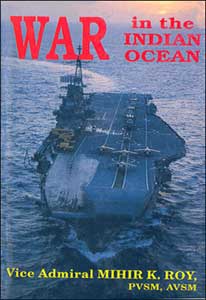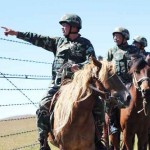Collecting intelligence
Some of these debrief reports were collected in a novel manner. Room boys from the Intercontinental Hotel were encouraged to serve tea to Pakistani military top brass during the daily briefings at Military Headquarters in curfew-bound Dacca. The information they brought back was analysed by the foreign journalists who were mostly cooped up in the Intercontinental Hotel. Uncensored reports were then smuggled to Bangkok via the crew of international flights who had permanent reservations in the Hotel. These reports were then transmitted to Washington, London, Paris and other capitals of the world. Some journalists, particularly veterans such as Claire Holingworth, who in spite of being in her sixties and a member of the weaker sex or perhaps because of both, conveniently cycled to the outskirts of the city and saw for herself the damage caused by the Mukti Bahini as also the harsh reprisals of the martial law authorities who annihilated fishing villages and destroyed their noakas (boats).
Indeed the agony in the seas adjacent to both segments of Pakistan was of a more painful affliction of “˜sea-blindness as lucidly and straightforwardly pointed out in the Official Story of the Pakistan Navy published by Naval Headquarters, Islamabad in 1991.
The underwater attacks by Mukti Bahini frogmen had serious repercussions on foreign shipping lines who increased their war-risk insurance from five shillings to one pound sterling as also an additional 20 per cent ‘risk pay’ for the crew. Further, 1000 dollars per day was paid to each ship which dared to remain in port for a period of more than one week as risk money. Even so, foreign shippers shied away from East Pakistan ports in spite of tight security measures being enforced by the martial law administrators.
The traditional exports from East Pakistan such as jute. tea and coir lay piled up at the Chalna and Chittagong ports. The President of the World Bank. Robert McNamara. who had been assured that the situation in East Pakistan was well under control, was persuaded by Dr Samar Sen, the Indian Director in the World Bank, to see for himself the produce piled up on the quayside with hardly any shipping being available in the heavily guarded ports.
Commodore, Commanding East Pakistan, whose incessant signals for more officers and so also riverine craft fell on deaf ears, as East Pakistan was still too remote to affect the routine staff work in Naval Headquarters at Karachi. The latter continued to believe that the ‘turmoil in the East would soon subside’. Paradoxically the hot topic in the Pakistan Navy was instead new uniforms for sailors, the enlarging of training for foreign navies, commencement of a Junior Staff Course, manning the survey branch, promotions and appointments and requests for a bigger share of the defence budget. And all this time, East Pakistan continued to be on fire.
The Pakistan Navy inevitably drifted into supporting the Army’s role in their Eastern wing which had not been visualized in any of the detailed threat papers circulated by the Joint Chief of Staff. Indeed the agony in the seas adjacent to both segments of Pakistan was of a more painful affliction of ‘sea-blindness’ as lucidly and straightforwardly pointed out in the Official Story of the Pakistan Navy published by Naval Headquarters, Islamabad in 1991.
The reaction of Naval Headquarters, Karachi
Vice Admiral Muzaffar Hassan, C-in-C Pakistan Navy, visited China, Saudi Arabia, Turkey and Egypt for obtaining more vessels and maintenance assistance for the neglected Pakistan Navy which overnight had become a much-needed partner for the Pakistan Army left high and dry in the riverine delta of East Bengal. All available river craft were requisitioned. The two fast patrol craft which were transferred by the Royal Saudi Navy and commissioned as PN ships Sadaqat and Rifaqat but were nonetheless retained in Karachi. It will be seen in a later section that the only role played by the gunboat Sadaqat was to rescue survivors from Khaibar and Muhafiz after the missile attack off Karachi. Hence, the hard-pressed Pakistan Navy placed panic orders for boats on the Khulna and Narayanganj shipyards.
| Also read: |
The DCNS (T) flew to East Pakistan to hasten the construction of landing craft at Khulna shipyard as also a river patrol boat (PBR) whose trials had been completed in August 1971. The work on a floating dock was also accelerated. Captain Niazi who had just returned from France was sent to procure engines for these craft from China and Europe. But all along this mirage of rallying the national will was torpedoed by the halting of production of the steel mill, the departure of foreign technicians due to civil disturbances and substantial desertion of Bengali clerical staff, workers, lascars, MT drivers and labour force in defence establishments. COMCEP had about 500 West Pakistanis and 300 East Pakistanis. The Flag Officer East Pakistan, Rear Admiral Shariff on taking over from COMCEP suggested the transfer of all East Pakistanis to Karachi and replacing them by West Pakistan complements. The striking factor was that while hitherto the Navy had relied on the Army for food, transport and logistics, the situation was now reversed with the land forces in East Pakistan having to depend entirely on naval logistics.
 Inland waterways transport were armed with a variety of Oerilokns, machine guns, 40 mm Bofors and Chinese 14.5 mm guns which were later standardized to the 12 7 mm gun for which sufficient ammunition was available. Further, anti-frogmen measures such as grenades dropped from specially fabricated bombettes attached to light aircraft, harbour patrols, flood-lighting the jetties and heavily guarding installations with West Pakistani forces were more strictly enforced. Nonetheless, the flow of logistics continued to be disrupted. Night navigation was suspended and rationing introduced in the rice bowl of the nation. The frogmen remorselessly kept up their coordinated attacks at great personal risk notwithstanding the loss of eight personnel captured or killed in the August attacks. They tightened the noose which was unparalleled in the history of maritime warfare – frogmen versus a well-organized naval force! The London Times aptly summed it up as ‘fantastic’.
Inland waterways transport were armed with a variety of Oerilokns, machine guns, 40 mm Bofors and Chinese 14.5 mm guns which were later standardized to the 12 7 mm gun for which sufficient ammunition was available. Further, anti-frogmen measures such as grenades dropped from specially fabricated bombettes attached to light aircraft, harbour patrols, flood-lighting the jetties and heavily guarding installations with West Pakistani forces were more strictly enforced. Nonetheless, the flow of logistics continued to be disrupted. Night navigation was suspended and rationing introduced in the rice bowl of the nation. The frogmen remorselessly kept up their coordinated attacks at great personal risk notwithstanding the loss of eight personnel captured or killed in the August attacks. They tightened the noose which was unparalleled in the history of maritime warfare – frogmen versus a well-organized naval force! The London Times aptly summed it up as ‘fantastic’.
Continued…: Untold Heroism of Mukti Bahini Frogmen: Prelude to Liberation – III




